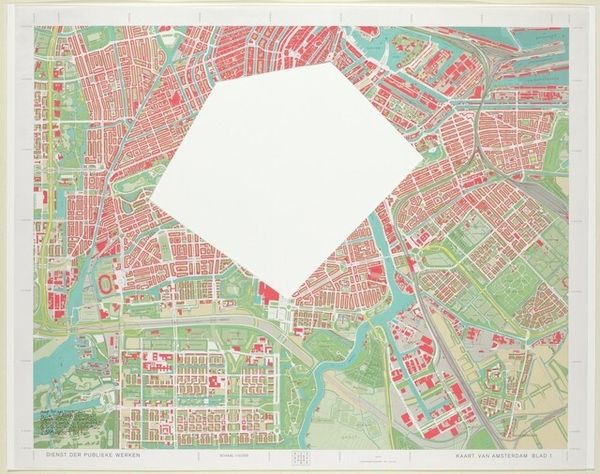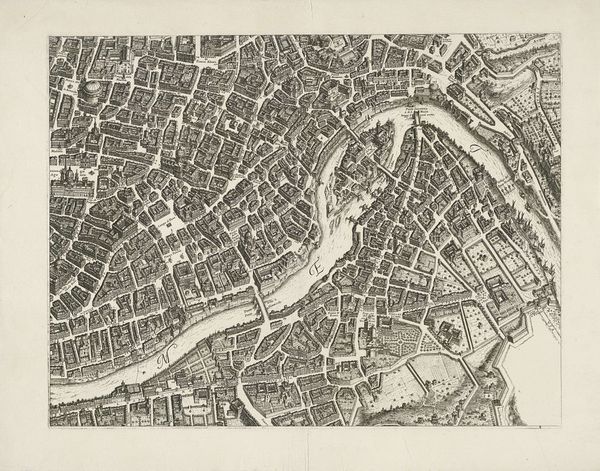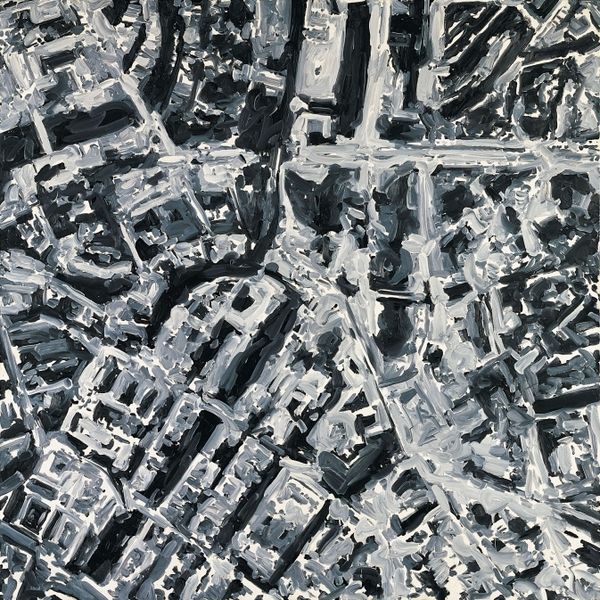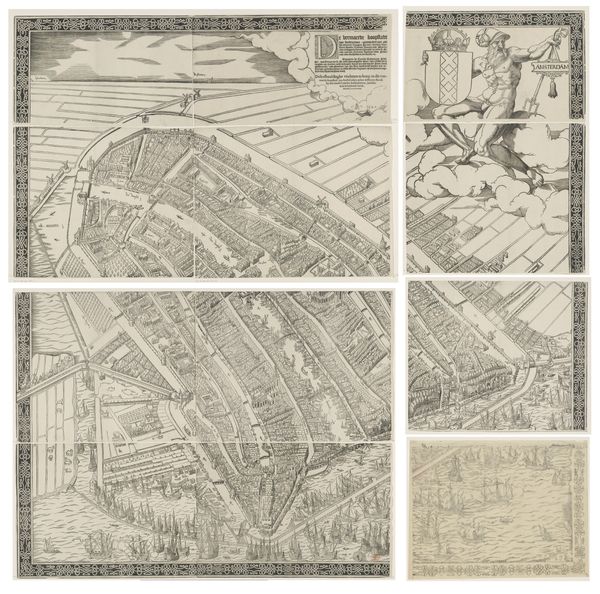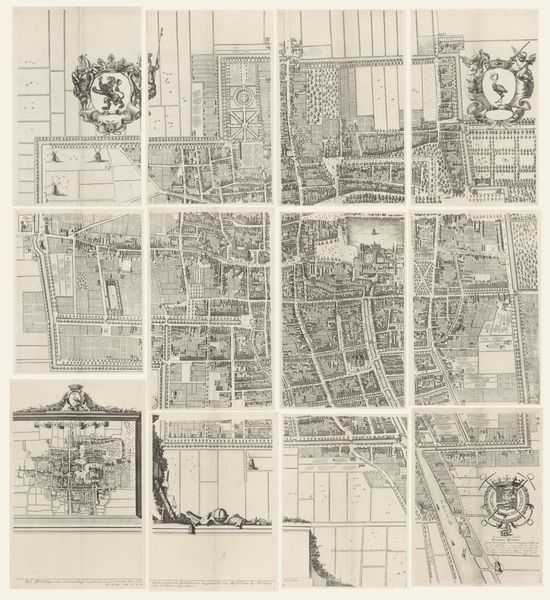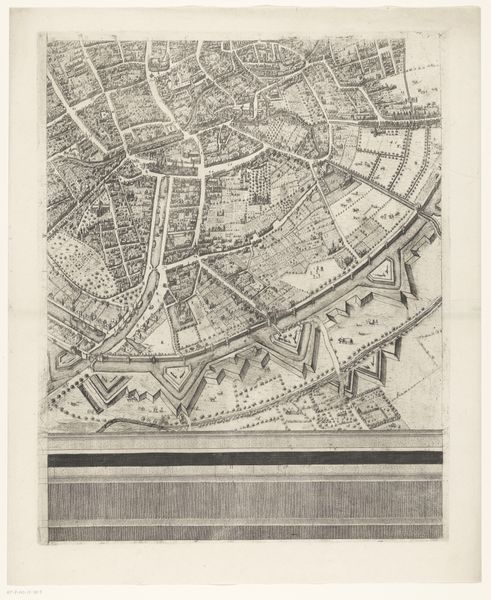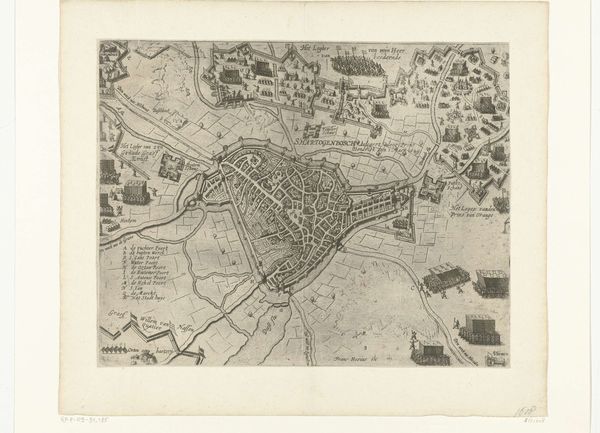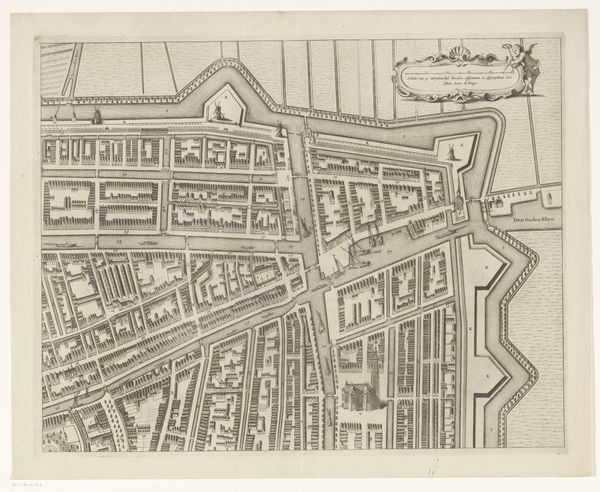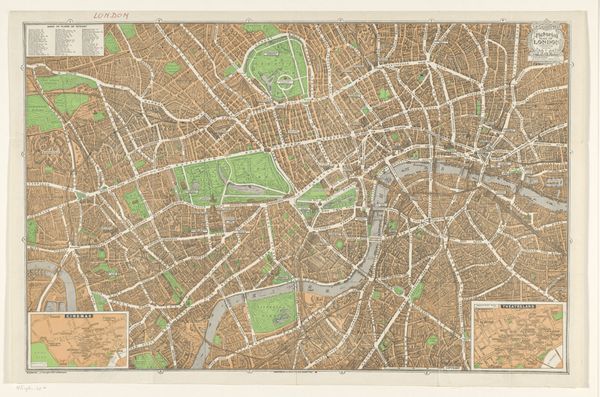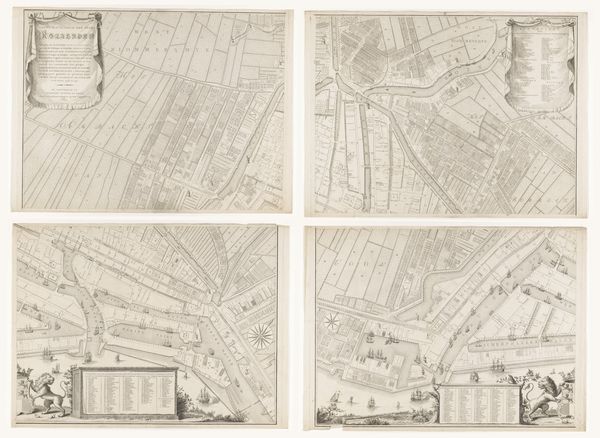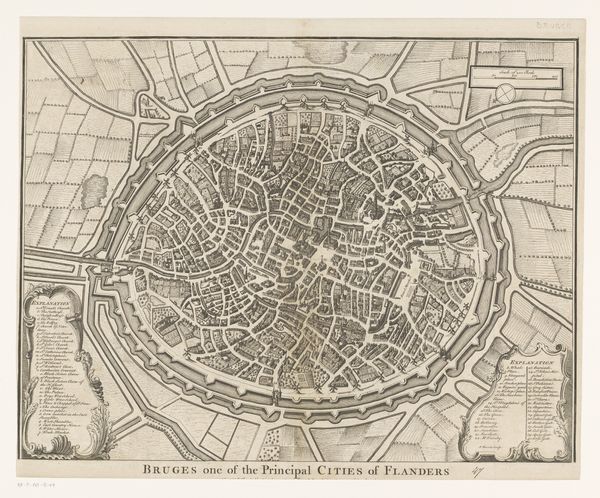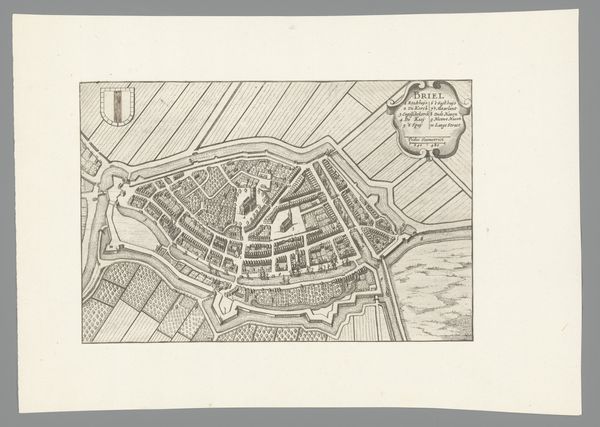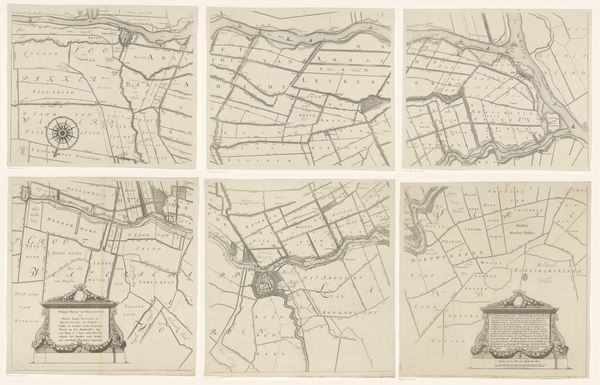
photography
#
natural stone pattern
#
rippled sketch texture
#
conceptual-art
#
minimalism
#
postmodernism
#
photography
#
repetitive shape and pattern
#
organic pattern
#
geometric
#
simple pattern
#
repetition of pattern
#
limited pattern
#
regular pattern
#
pattern repetition
#
cityscape
#
layered pattern
Dimensions: overall: 29.9 x 29.9 cm (11 3/4 x 11 3/4 in.)
Copyright: National Gallery of Art: CC0 1.0
Editor: Here we have Sol LeWitt's "A Square of Florence without a Trapezoid," created in 1978 using photography. At first glance, the striking contrast between the intricate cityscape and the stark white geometric shape is quite powerful. What's your interpretation of this work? Curator: It's more than just a contrast, isn't it? LeWitt places this stark geometric void, the missing trapezoid, directly onto a mapped, presumably existing section of Florence. Consider how maps have historically been tools of power, control, and even erasure. What does it mean to intentionally remove a shape, a piece of the city, from this representation? Editor: I guess it could be seen as disrupting the established order of things. By removing the trapezoid, is LeWitt perhaps highlighting the subjective nature of maps and urban planning? Curator: Exactly! We might think about who gets to decide what is included or excluded from our narratives of place. Who is granted visibility, and who is effectively disappeared? LeWitt is working in a post-modern vein here, where the apparent authority of modernist art begins to be undermined by conscious challenges to the prevailing structures of political representation. How might this relate to social justice struggles in the 1970s? Editor: So, the white shape isn’t just a formal element, but a statement about power, visibility, and the stories we choose to tell. That’s incredible! I’ll never see simple geometry the same way again. Curator: Precisely. And by engaging with this work, we’re invited to actively question the very foundations upon which knowledge and perceptions are constructed.
Comments
No comments
Be the first to comment and join the conversation on the ultimate creative platform.
